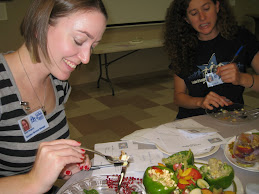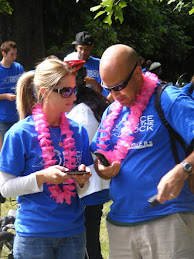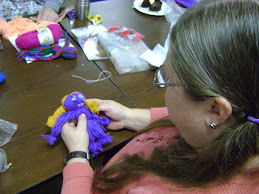Growing
your own food is great step in supporting healthy and environmentally-sound
food systems. If you feel like doing more, try saving your own seeds at
season’s end. It may sound difficult, but it’s very easy to save seeds from
most popular vegetables and herbs. Seed saving allows you to connect more
deeply with your food and the rhythm of nature while saving money. You can also
adapt your favorite varieties to your local climate. For a thorough list of
reasons to try seed saving check out “40 Reasons to
Save Seeds in 2015” from the Seed Savers Exchange.
Many
great resources exist that explain why seed saving is important. Sow True
Seed’s article
series on Mother Earth News is an introduction to the humble seed’s role in
food security and crop diversity. In a Huffington Post blog,
Danielle Nierenberg of Food Tank highlights fifteen seed saving organizations
(many in the US) collecting seeds in their regions and the world to preserve
global agricultural biodiversity. For a longer read, check out Janisse Ray’s “The
Seed Underground: A Growing Revolution to Save Seeds”. She dives into the
genetics and politics of seeds while weaving stories of the “quiet revolution
in thousands of gardens across America.”
There
are also many wonderful resources on how to save seeds. Sow True Seed has a
short and sweet guide with
instructions on saving specific vegetable, herb and flower seeds. The Organic
Seed Alliance offers a comprehensive guide
to planting, harvesting and cultivating seeds as well as a short course in
flower pollination. It’s in a printable format and may be a great resource to
have on hand. For those who prefer to quickly isolate their crop of interest,
the Seed Saver’s Exchange offers online Seed Saver instructions
with a drop-down menu of crops and flowers. The organization also posts a
monthly webinar
covering seed saving techniques for different crops.
For
seed savers who want to share their favorite crops and try new varieties, local
seed libraries provide a space to share, trade and collect local biodiversity.
Check out this Seed Library Locator Map
to see if there is a library near you or add your local seed library! Also,
this seed library directory
lists many libraries found in the United States.
Seed
saving is becoming increasingly popular as demand and concern about threatened
crops and agricultural diversity rises. Do you save your seeds? What are
some of your favorite resources? Please share in the comments below. Happy seed
saving!
Submitted by Kate Wilkins, Garden Coordinator at SFBFS





